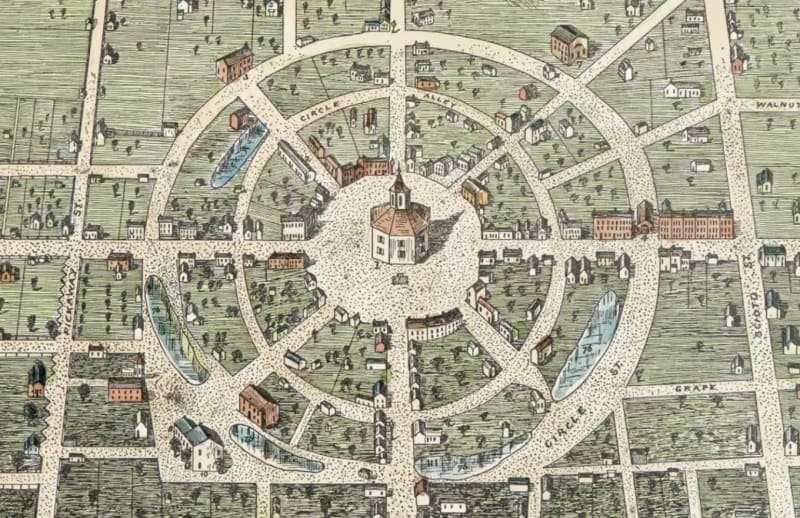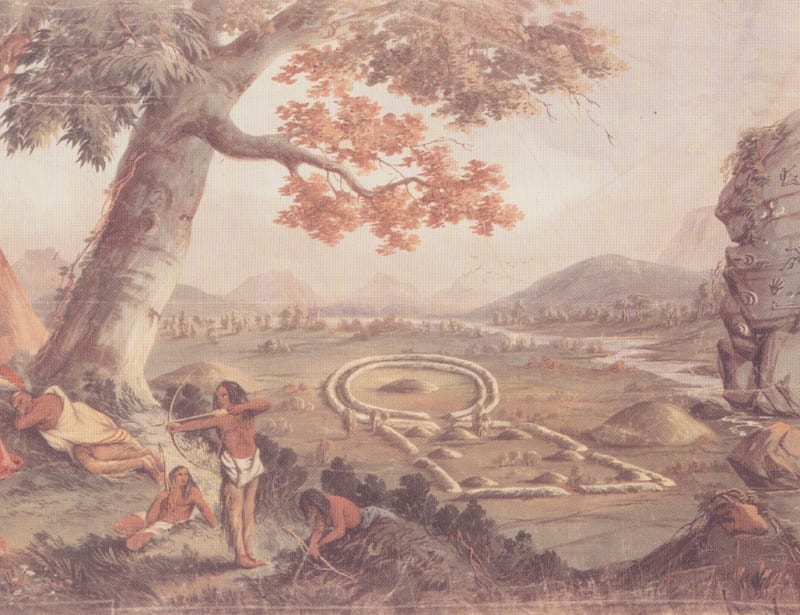The Squaring of Circleville

The geometrical conundrum of squaring the circle goes back to the ancient Greek mathematician Anaxagoras, and perhaps to Babylonian scholars before him. Given a circle, is it possible to construct a square of the exact same area, using only compasses and a straight edge? Many hopeful geometers, including Leonardo Da Vinci, battered their heads against the problem, until it was finally proved insoluble in 1882. But the inhabitants of a small town in Ohio had actually achieved the impossible some decades earlier.
The plan of Circleville Ohio was laid out in the 1810s by the town’s first Director Daniel Dresbach. He sited the town inside a large old circular earthwork built by members of the indigenous Hopewell culture. The plan took the form of two concentric circular streets, joined by straight streets radiating from the centre. At the very middle, on a mound, was the octagonal county courthouse.

By the 1830s however the Circlevillians had become irritated with their town’s circularity. The conception of the plan was dismissed as ‘childish sentimentalism’. It was proving difficult to fit buildings onto the awkward-shaped lots, and odd bits of leftover land were wasted. The townspeople established the Squaring Circleville Company and petitioned the Ohio General Assembly in 1837 to allow the Company to convert the street layout – with the cooperation of landowners – into a standard rectangular American grid-iron. The process was carried out by stages in the four quadrants of the circle and was completed by 1856. The town however kept its name: it was not rechristened Squareville.
Some accounts say that buildings survive today with curved walls inherited from the original plan. Others say that there is only one building remaining, the Ted Lewis Museum at 133 W Main Street. This has a strictly rectangular shape – although the tapering sliver of land behind is perhaps a vestige of the old plot layout.
It has been argued that a rectangular geometry allows for a much greater flexibility than other geometrical disciplines, in the packing together of component parts of different sizes. This proposition would apply to sites fitted together in city blocks as well as to rooms fitted together in the plans of buildings. Did the architects and builders of the old Circleville struggle to fit structures with curved walls containing curved rooms to the curves of the town’s streets and lots? On this question, local historians are silent.
John W Reps, ‘Urban redevelopment in the nineteenth century: the squaring of Circleville’, *Journal of the Society of Architectural Historians *Vol.14, December 1955, pp.23-26
Philip Steadman, ‘Why are most buildings rectangular?’, Architectural Research Quarterly, Volume 10, 2006 pp.119-130